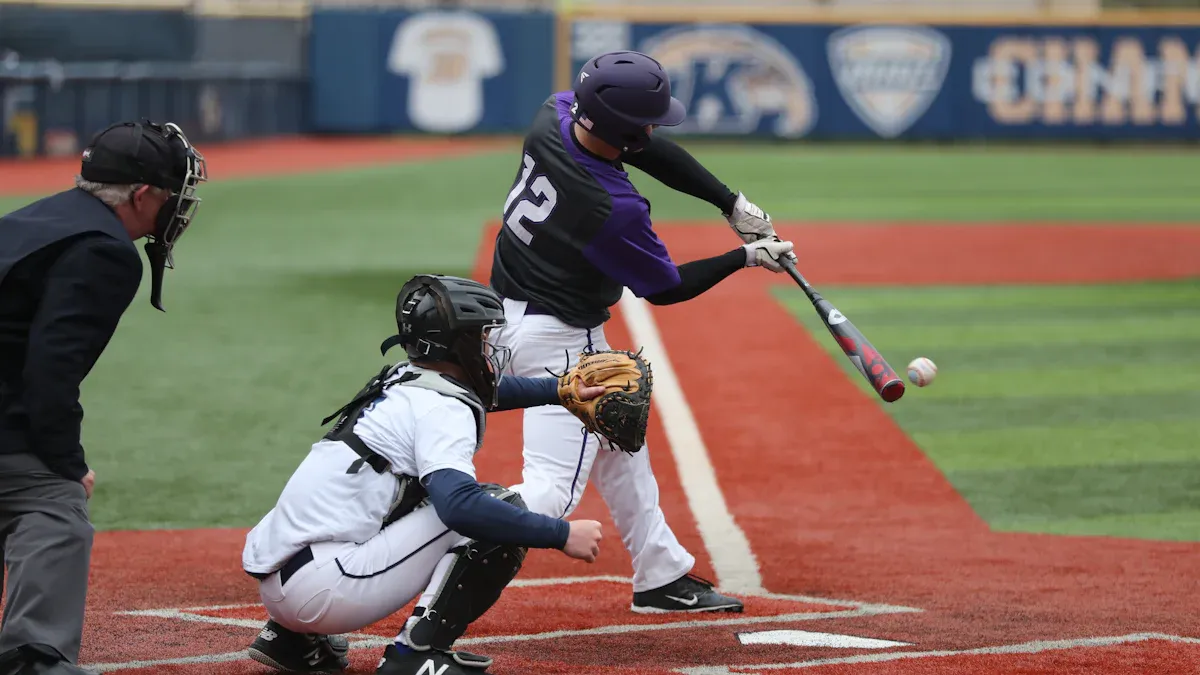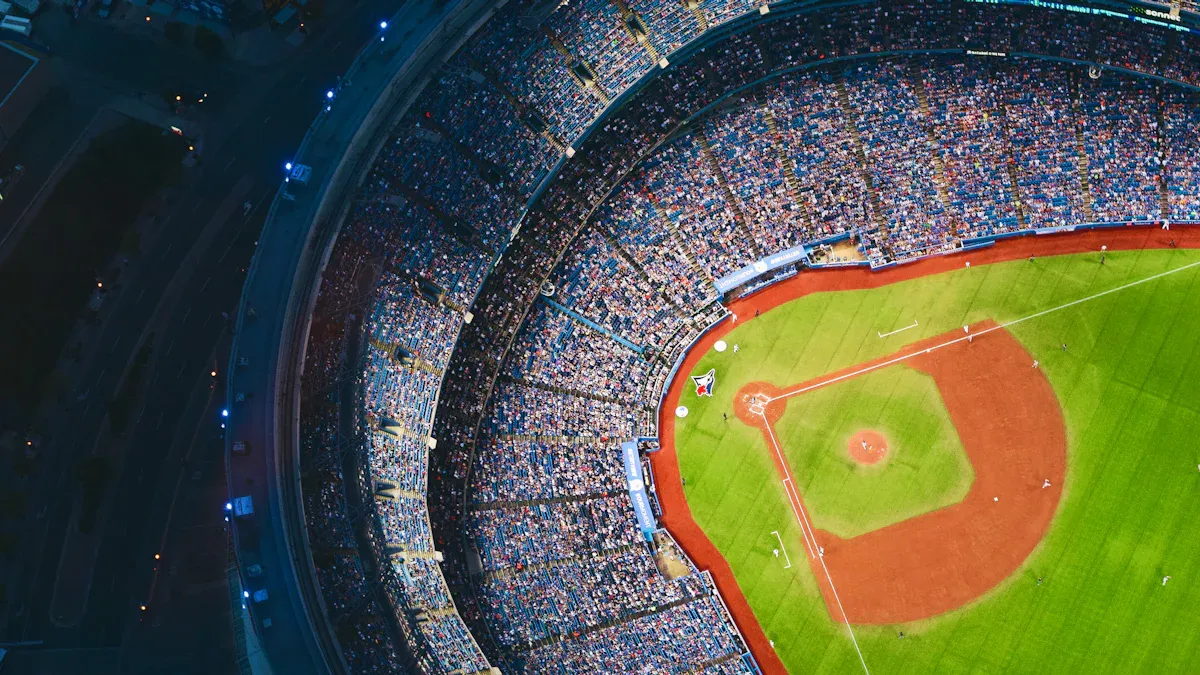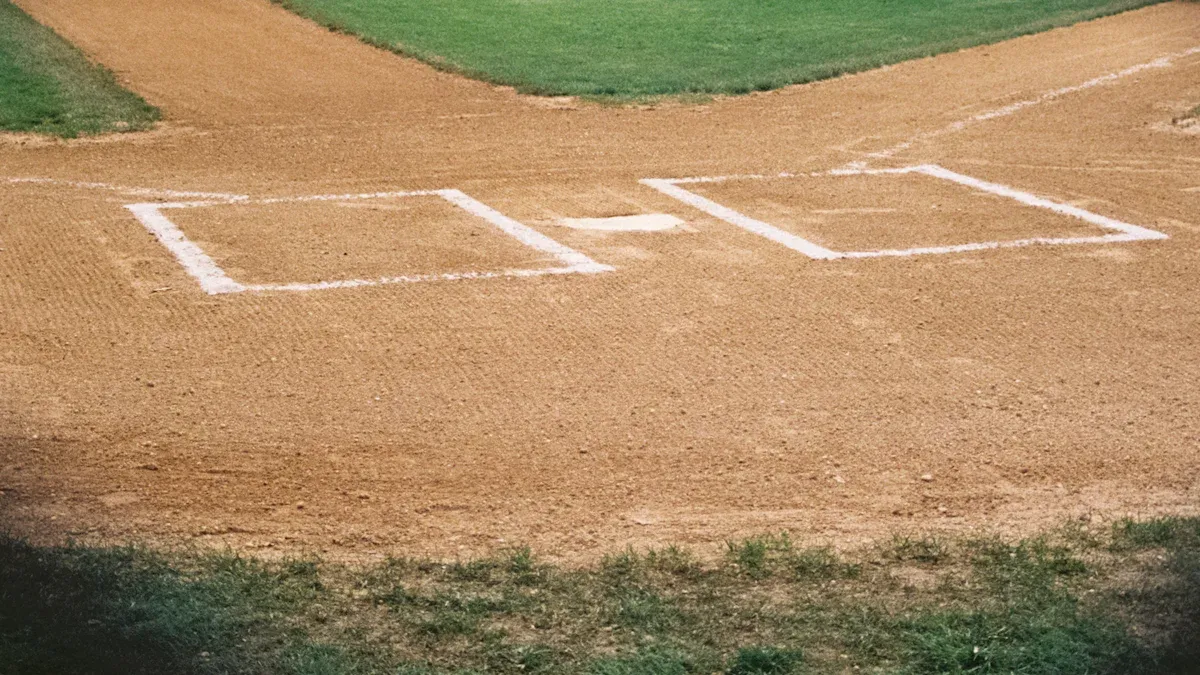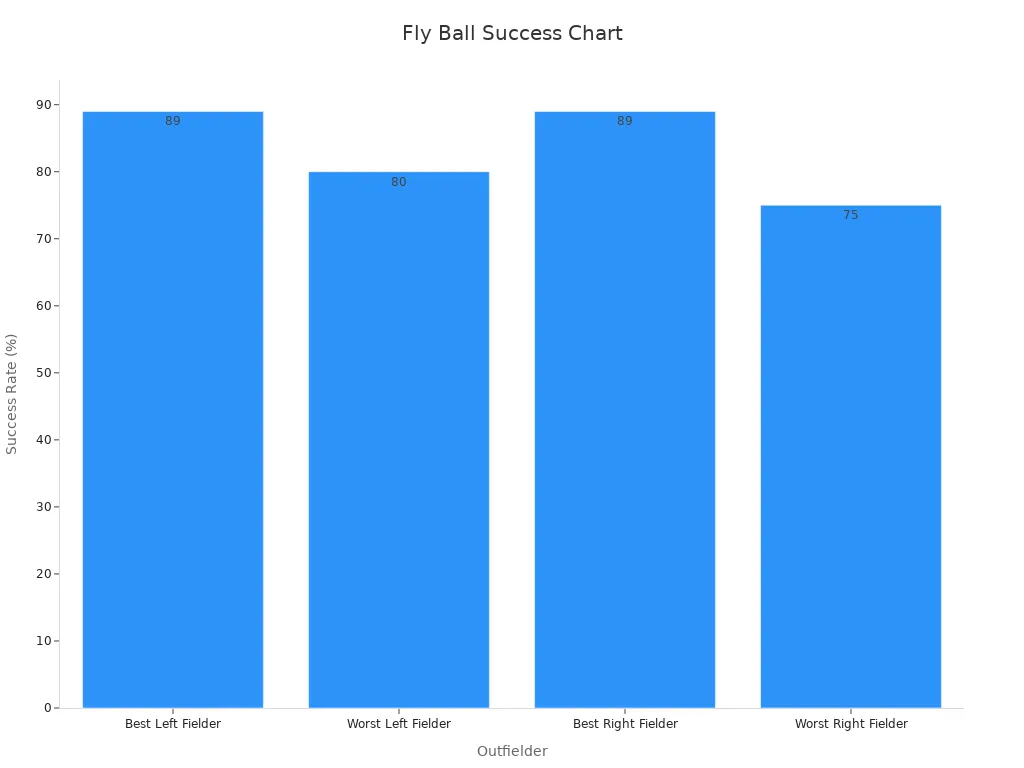
In baseball, “OF” means outfielder. Outfielders guard the outfield area and are crucial to understanding what “mean in baseball” when it comes to defensive strategies. They catch balls hit far into the field, and how well they play can change the game’s result.
Catch Probability shows how likely they are to catch a ball, which is essential to grasping what “mean in baseball” regarding their effectiveness. It depends on the ball’s distance and time.
Outs Above Average (OAA) checks how well they handle tough plays, further illustrating their defensive talent and what it can “mean in baseball.”
Outfielders are very important for a team’s defensive success in baseball, highlighting their role in the overall game strategy.
Key Takeaways
Outfielders, called ‘OF’, are important in baseball. They protect the outfield and make big defensive plays.
Stats like Catch Probability and Outs Above Average (OAA) show how good an outfielder is.
Getting better at catching, throwing, and running helps outfielders play better and help their team more.
Outfield Positions in Baseball

When watching baseball, you’ll see three outfield spots: left field, center field, and right field. Each spot has its own duties and challenges, helping the team’s defense.
Left Field
Left fielders are great at catching fly balls and throwing fast to the infield. In the past, they hit 10% better than the league average. Now, they hit about the same as the league average. This change shows how their role has shifted over time.
Center Field
Center fielders cover the most space in the outfield. They need to be quick and agile to catch deep hits. Since 2015, they’ve moved back about 12 feet on average. This helps lower batting averages for liners and flies. Over time, their hitting has gone from slightly above average to slightly below average, showing how the game has changed.
Right Field
Right fielders usually have strong arms to stop runners from advancing. Their hitting has dropped about 5% below the league average over time. Still, their defense is very important. Stats like Defensive Runs Saved (DRS) and Ultimate Zone Rating (UZR) help teams judge their skills and decide where to place them.
Note: Changes in defensive strategies show why each outfield spot matters. Teams use data to adjust player positions, improving their defense and chances of getting outs.
Position | |
|---|---|
Center Fielders | From slightly better than league average to slightly worse than league average |
Left Fielders | From hitting 10% better than league average to hitting exactly league average |
Right Fielders | Decrease of about 5 percentage points from league average |
Learning about these roles helps you see what “mean in baseball” when talking about outfielders and their impact on the game.
Roles and Responsibilities of Outfielders

Outfielders are key to keeping a baseball team’s defense strong. They catch fly balls, throw accurately, and cover large areas. These tasks need skill, focus, and athletic ability.
Catching Fly Balls
Catching fly balls is very important for outfielders. They must judge the ball’s path, speed, and distance to catch it. A good catch can stop the other team from scoring.
Stats show outfielders have different success rates for catching fly balls. Right fielders succeed 83.8% of the time, while left fielders succeed 83.3%. The best outfielders can reach success rates of 89%.
Position | Fly Ball Success Rate | Line Drive Success Rate |
|---|---|---|
Right Field | 83.8% | 17.7% |
Left Field | 83.3% | 16.6% |
Outfielder | Fly Ball Success Rate |
|---|---|
Best Left Fielder | 89% |
Worst Left Fielder | 80% |
Best Right Fielder | 89% |
Worst Right Fielder | 75% |
Tip: Outfielders with great fly ball success often have quick reflexes and sharp hand-eye coordination.

Throwing Accuracy
Throwing accurately is another vital skill for outfielders. After catching the ball, they must throw it fast and precisely to stop runners. A strong throw can turn a possible run into an out, changing the game.
Outfielders with great throwing accuracy practice their arm strength and aim. Teams use stats like assists and errors to measure their performance. Accurate throws are crucial in tight moments, like stopping a runner from scoring.
Note: A perfect throw at the right time can help your team win.
Covering Ground
Outfielders need to cover a lot of ground to make plays. They must react fast, run quickly, and take the best path to the ball. Metrics like Outs Above Average (OAA) measure how well they handle tough plays.
Data shows how covering ground affects game results. For example, “burst” (quick acceleration) has the strongest link to OAA at 0.916. Reaction time and route efficiency also matter.
Component | Link to OAA |
|---|---|
Reaction | .740 |
Burst | .916 |
Route | -.319 |
Variable | R-Value | R-Squared |
|---|---|---|
Route | -.13 | .02 |
Reaction | .41 | .16 |
Burst | .82 | .67 |
Reaction + Burst | .73 | .54 |
Feet Covered | .79 | .64 |
Sprint Speed | .50 | .25 |

Tip: Improving reaction time and burst speed helps outfielders stop hits and runs more effectively.
Why Outfielders Matter in Baseball
Defensive Strategy
Outfielders are important for a team’s defense. They move based on where batters usually hit. Teams study data to guess where the ball might go. This helps outfielders stand in the best spots to make plays.
Outfielders shift to cover areas batters often aim for.
Defensive shifts move players to stop strong hitters from scoring.
Better positioning closes gaps, making it harder for batters to succeed.
These moves show how outfielders help with defense. Their quick adjustments can stop runs and change the game’s result.
Game-Changing Plays
Outfielders make big plays that can change a game. A diving catch or a strong throw can stop a run. These plays need fast thinking and perfect timing. Watch how outfielders handle tough moments. Their skills can turn hard plays into amazing highlights.
Notable Outfielders in History
Baseball has had many great outfielders. Willie Mays and Ken Griffey Jr. are famous for their catches and throws. Mays’ “The Catch” in 1954 is one of baseball’s best moments. Griffey Jr.’s speed and talent made him loved by fans. These players show how outfielders can be legends and shape the game forever.
Outfielders, called “OF,” are key players in baseball. They protect the outfield, catch high balls, and make big plays. Their skills in running and throwing affect defense and offense. Knowing their role shows how important they are in every game.
FAQ
What does “OF” mean in baseball?
“OF” stands for “Outfielder.” Outfielders play defense in left, center, and right field.
How can outfielders get better at their game?
Outfielders practice catching, throwing, and running to improve. They also use data to guess where balls will go and adjust their positions.
Why is the outfield important in baseball?
The outfield stops big hits and home runs. Outfielders’ defense can decide if a team wins or loses.
Tip: Watch how outfielders predict plays and make big moves during games! 🧢⚾
